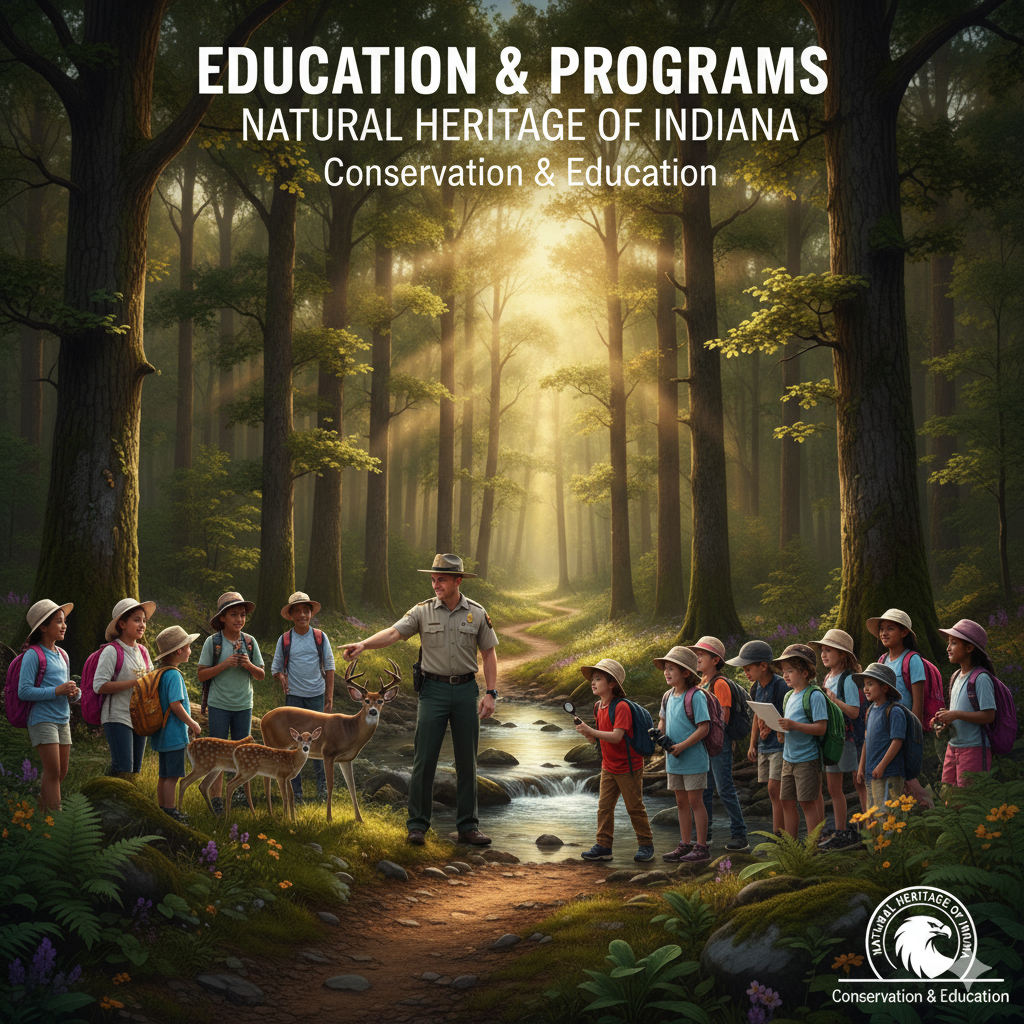
Education & Programs | Natural Heritage of Indiana | Conservation & Education
Conservation is not possible without education. Indiana understands that to protect its natural heritage, people of all ages must learn to value, understand, and engage with the environment. That is why the state has invested heavily in environmental education programs, from elementary school classrooms to university research initiatives, and from community workshops to statewide campaigns. Education transforms abstract concepts into lived values, shaping citizens who carry conservation into every aspect of their lives.
In schools, conservation is taught not only through textbooks but also through experience. Many elementary and middle schools integrate nature-based learning into their curricula, introducing children to concepts like ecosystems, recycling, and biodiversity. Students participate in field trips to wetlands, forests, and wildlife centers where they can observe habitats firsthand. These experiences spark curiosity and nurture a sense of wonder that can last a lifetime.
High school and college programs expand on these foundations by offering specialized courses in biology, environmental science, and sustainability studies. Universities partner with state agencies to conduct research on wildlife populations, invasive species management, and climate resilience. Students are encouraged to participate in fieldwork, giving them practical skills and a deeper connection to conservation work. Indiana University, Purdue University, and other institutions have been leaders in fostering the next generation of environmental scientists.
Programs extend far beyond the classroom. Nature centers and museums across Indiana host workshops and exhibitions that bring conservation to the broader community. Visitors learn about wetlands restoration, native plant gardening, or renewable energy practices in engaging, hands-on ways. Citizen science initiatives allow individuals to participate in bird counts, insect surveys, and climate monitoring projects, transforming education into action.
Youth camps and after-school programs also play an important role. Children engage in outdoor adventures such as hiking, canoeing, and camping while learning about ecology and stewardship. These programs build character, teamwork, and a sense of responsibility, proving that conservation is as much about people as it is about wildlife.
Adult education is equally important. Community workshops teach sustainable living practices, from composting and rainwater harvesting to reducing household energy consumption. Public lectures by scientists and conservationists open discussions on global issues like climate change, connecting them to local realities. These programs empower adults to make environmentally conscious decisions in their daily lives, influencing everything from how they garden to how they vote.
Digital education has also become a vital tool. Online platforms, webinars, and social media campaigns allow conservation organizations to reach audiences far beyond traditional classrooms. By combining storytelling with science, these digital resources inspire individuals to adopt sustainable habits and join advocacy efforts.
Education in Indiana is not about memorizing facts—it is about creating meaningful connections between people and nature. Programs encourage participants to see themselves as stewards of the environment, not merely bystanders. By instilling knowledge and inspiring action, education ensures that conservation is not just a movement but a cultural value deeply embedded in Indiana’s identity.